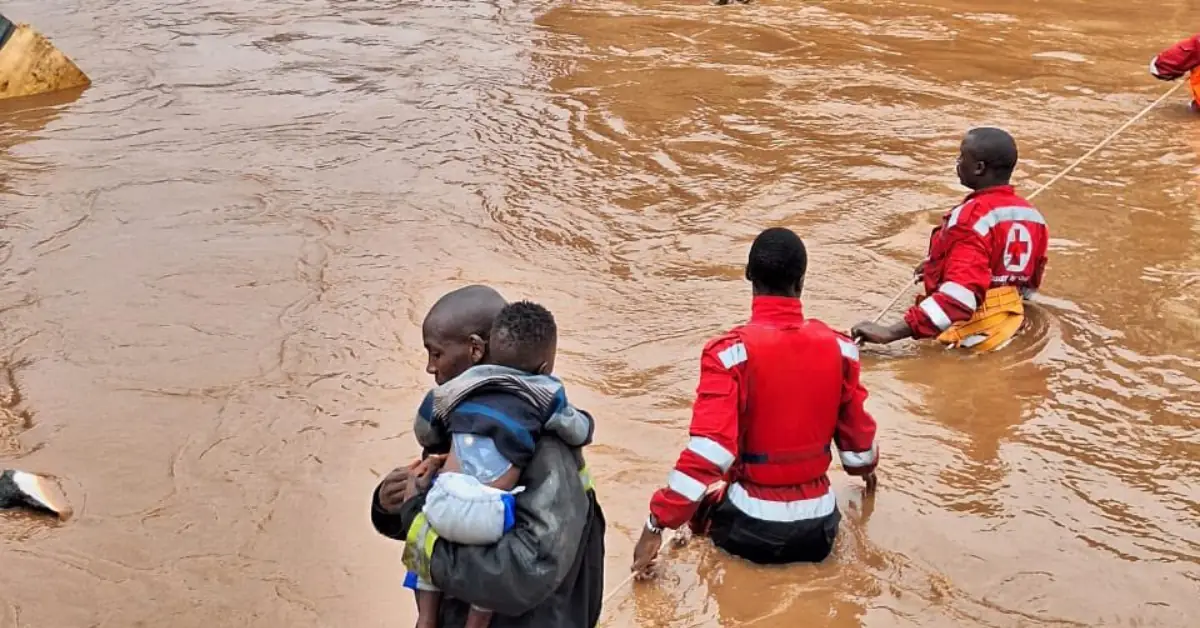
Kenya nairobi flooding – Nairobi, Kenya’s vibrant capital, has been grappling with recurring flooding, a challenge that demands urgent attention. This article delves into the causes, impacts, and potential solutions for this pressing issue, providing insights into the city’s resilience and the need for proactive measures.
Nairobi’s flooding crisis stems from a complex interplay of factors, including inadequate infrastructure, unpredictable rainfall patterns, and environmental degradation. The city’s aging drainage systems struggle to cope with heavy rainfall, leading to widespread inundation. Moreover, encroachment on wetlands and deforestation have exacerbated the problem, reducing the natural capacity for water absorption.
Flooding Causes

Nairobi’s flooding is a complex issue with multiple contributing factors. One major cause is inadequate infrastructure, particularly in informal settlements. Poor drainage systems and blocked waterways lead to water accumulation during heavy rainfall.
Rainfall patterns have also changed over time, with more frequent and intense downpours. Climate change is a major driver of these changes, leading to increased precipitation and unpredictable weather patterns.
Environmental factors also play a role. Deforestation and urbanization have reduced natural water retention areas, exacerbating the impact of heavy rainfall. Additionally, encroachment on riparian zones has narrowed waterways and reduced their capacity to absorb floodwaters.
Flooding Impacts: Kenya Nairobi Flooding

Flooding in Nairobi has devastating consequences for the city’s infrastructure, economy, and population.
Infrastructure is often damaged or destroyed by floodwaters, disrupting transportation, communication, and essential services. The city’s economy is also affected, as businesses are forced to close or operate at reduced capacity.
Flooding also poses a serious health risk to residents. Standing water can breed mosquitoes and other disease-carrying insects, leading to an increased risk of waterborne illnesses and other health problems.
Government Response
The Kenyan government has implemented several measures to address flooding in Nairobi, including infrastructure improvements, drainage upgrades, and environmental conservation initiatives.
However, these efforts have been met with mixed results. Some projects have been successful in reducing flooding, while others have faced challenges such as funding constraints and lack of coordination between different agencies.
Critics argue that the government’s response has been insufficient and that more needs to be done to address the root causes of flooding, such as climate change and urban planning issues.
Community Resilience
In addition to government efforts, communities in Nairobi are also playing a vital role in responding to and recovering from flooding.
Local initiatives include community-led cleanup campaigns, flood early warning systems, and disaster preparedness training. These initiatives have helped to reduce the impact of flooding and build resilience among residents.
One successful example is the “Vijana Shujaa” (Youth Heroes) initiative, which trains young people in flood risk management and community mobilization. The program has helped to raise awareness about flooding and empower communities to take action to protect themselves.
Environmental Mitigation
Environmental measures can play a significant role in reducing flooding risks in Nairobi. These measures include:
- Reforestation and afforestation: Planting trees helps to absorb rainwater and reduce runoff.
- Wetland restoration: Wetlands act as natural sponges, absorbing and storing floodwaters.
- Permeable pavements: These pavements allow water to infiltrate the ground, reducing runoff.
- Rainwater harvesting: Collecting and storing rainwater can help to reduce the amount of water that flows into drainage systems during heavy rainfall.
Implementing these measures requires a coordinated effort between the government, communities, and other stakeholders. However, the benefits of these measures can be significant, including reduced flooding risks, improved water quality, and increased green spaces.
Future Preparedness
To improve preparedness for future flooding events, Nairobi needs to focus on several key areas:
- Early warning systems: Establishing and improving early warning systems can provide residents with valuable time to prepare for and respond to flooding.
- Evacuation plans: Developing and practicing evacuation plans can help to ensure that residents know where to go and how to stay safe in the event of a flood.
- Disaster management protocols: Clear and coordinated disaster management protocols are essential for an effective response to flooding. These protocols should Artikel the roles and responsibilities of different agencies and organizations involved in disaster management.
- Public education: Raising awareness about flooding risks and preparedness measures is crucial for empowering residents to take action to protect themselves and their communities.
By investing in these measures, Nairobi can improve its preparedness for future flooding events and reduce the impact of flooding on the city’s infrastructure, economy, and population.
Final Wrap-Up
Addressing Nairobi’s flooding requires a multifaceted approach. The government must invest in infrastructure upgrades, including improved drainage systems and flood control measures. Simultaneously, community engagement is crucial for fostering resilience. Local initiatives that promote awareness, preparedness, and collaboration can empower communities to respond effectively to flooding events.
Environmental mitigation measures, such as reforestation and wetland restoration, offer long-term solutions by reducing runoff and improving water retention. By implementing these strategies, Nairobi can mitigate the risks associated with flooding and enhance its resilience to future challenges.
User Queries
What are the main causes of flooding in Nairobi?
Inadequate infrastructure, unpredictable rainfall patterns, and environmental degradation contribute to Nairobi’s flooding problem.
How does flooding impact Nairobi’s population?
Flooding disrupts livelihoods, damages infrastructure, and poses health risks to Nairobi’s residents.
What role can communities play in addressing flooding?
Communities can engage in awareness campaigns, prepare emergency plans, and collaborate with local authorities to enhance resilience to flooding.





